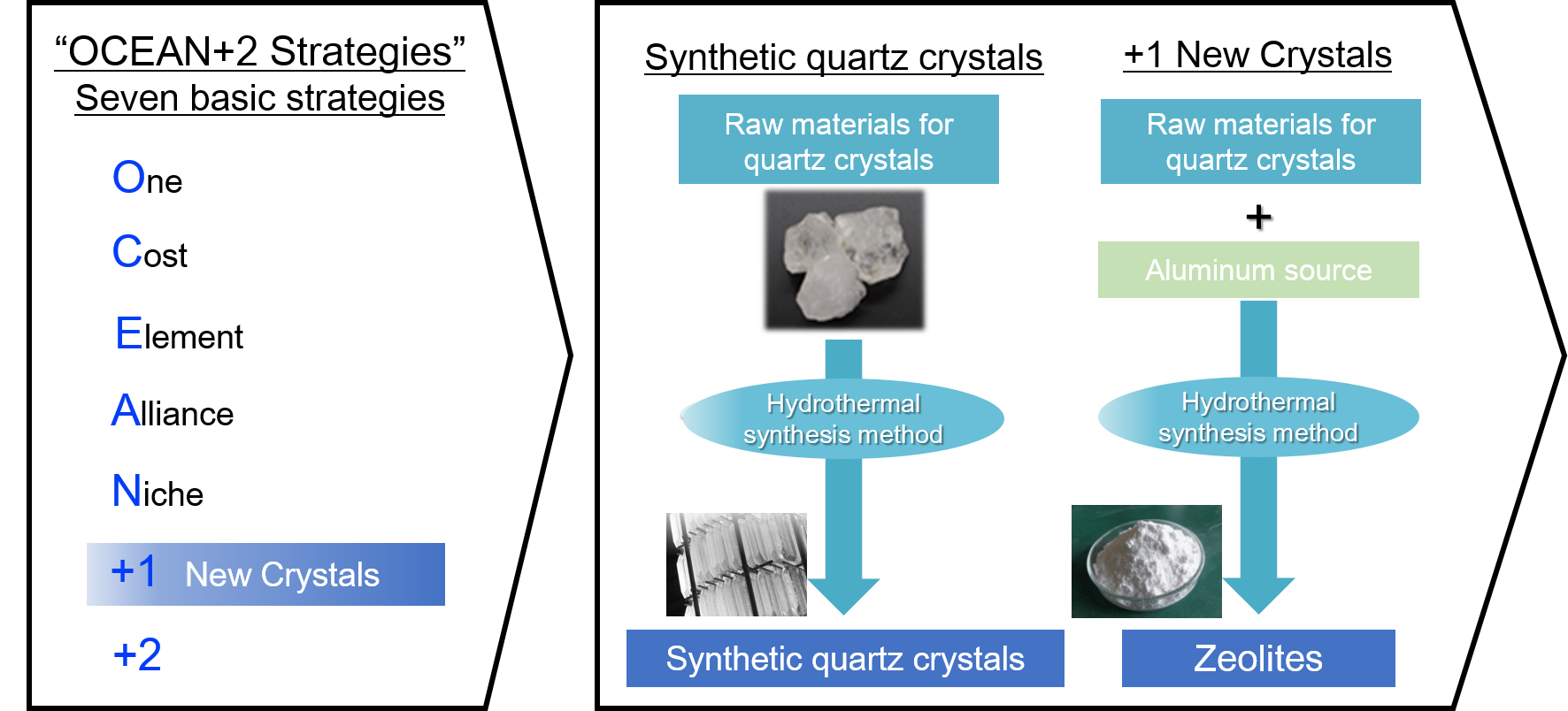Development of new crystals — zeolites
In 2019, we formulated the OCEAN+2 Strategies as a 10-year Long-term Business Plan to break away from a red ocean full of excessive competition and explore a new market, namely, a blue ocean, based on the development of products with excellent competitive advantages while striving to achieve a stable, highly profitable corporate structure.
In the “New Crystals” initiative, which is one of the basic strategies, we have worked on the development of crystals, based on the technology to grow synthetic quartz crystals, which is our core technology. We succeeded in synthesizing zeolites, based on the hydrothermal synthesis method, which is also used for growing synthetic quartz crystals.

What are zeolites?
Zeolites refer to crystals containing silicon and aluminum. There are many types depending on the size of pores inside crystals. The usage is determined based on the pore size. There are naturally occurring zeolites and artificially synthesized zeolites. While natural zeolites are mainly used for adsorption, synthetic zeolites are used for adsorption and catalysis.

The market size of synthetic zeolites is expected to grow to about one trillion yen by 2027. Based on our study on various applications, we worked on and succeeded in synthesis of MFI zeolites, which can be used as petroleum refining catalysts.
Our strengths in zeolite synthesis
Synthesis of zeolites requires silicon and aluminum. We focused on the fact that silicon was dissolved in the waste liquid left from growing synthetic quartz crystals and succeeded in synthesizing zeolites from the waste liquid. However, only a certain amount can be produced from the waste liquid. We expect to secure the target production volume by using materials available at our company, such as lascas, which are raw materials for synthetic quartz crystals, and off-specification synthetic quartz crystals.
In the hydrothermal synthesis method, a special pressure vessel is used to realize a high-pressure environment. However, such a pressure vessel is highly expensive. In general, a large amount of capital expenditure is required to generate a large volume of zeolites. To minimize the initial investment, we have been working to effectively utilize idle furnaces for growing synthetic quartz crystals. We are currently expanding the scale of our synthesis equipment, with the ultimate goal of creating a system that can produce 130 tons per year.

